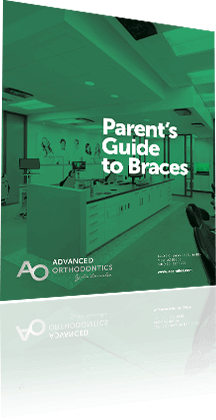Invisible aligners, or Invisalign, provide a revolutionary treatment option for correcting patients’ dental issues. These custom-made, clear braces can align teeth into their correct place over time. However, they offer distinct advantages over metal braces, such as being easily removable, less noticeable, and easier to clean.
Below, we’ll go over several examples of before and after Invisalign overbite cases, demonstrating how effective they are for patients who have malocclusion.
Why Overbites Need Treatment
Treating an overbite goes beyond just mere cosmetics. In most cases, it is a necessity as it may have adverse side effects, such as the following:
- Increased risk of tooth decay
- Sleep apnea
- Mild to severe pain in the jaw
- Speech impediment
- Difficulty chewing food
Some patients might feel like they don’t need an overbite addressed immediately by an orthodontist. However, it is best to get treatment sooner rather than later, especially for younger patients who are still growing and developing. If left untreated, the symptoms mentioned above can get worse over time. Getting your overbite treated as soon as possible will save you from pain and further issues later in your life.
Invisalign Benefits
As mentioned earlier, invisible aligners offer several crucial benefits, which is why many orthodontists opt to use them instead of traditional braces with brackets and wires. These clear braces can be used to fix some of the most common alignment problems:
- Overbite
- Underbite
- Open bite
- Misaligned teeth
- Gap teeth
- Crossbite
- Crowded teeth
Invisalign also allows patients to eat any food they prefer. They can be easily removed, making them easier to clean than regular metal braces. When you use Invisalign, you don’t need to visit your orthodontist as often since they don’t require tightening or adjustments.
In addition, they’re more comfortable to wear and use. You don’t feel much tension in your teeth, which means no soreness in the gums. Whenever you eat, floss, or brush your teeth, you can remove them.
Below, we’ve covered several examples of Invisalign before and after overbite cases.
Can an Invisalign Fix an Overbite
Plenty of Invisalign before and after overbite examples serve as evidence of its efficacy. Dental practitioners use invisible aligners to treat overbites, underbites, and overcrowding. These are the three classes of malocclusion or misalignment of human teeth.
Treatment for Class 1 Malocclusion
Class 1 is one of the most common types of malocclusion treated by orthodontists.
Patients suffering from this issue will have a normal bite. However, you can quickly notice that the upper teeth overlap slightly with the lower ones.
In class 1 Invisalign before and after overbite cases, the patient will have a normal molar position. However, the other teeth can be misaligned in one way or another. Specific issues such as gaps, rotated, and overcrowded teeth may contribute to a class 1 malocclusion.
Orthodontists can use Invisalign as an effective treatment for this type of overbite. Clear aligners gently pull teeth into alignment by slowly reshaping the underlying bones in the tooth sockets.
Treatment for Class 2 Malocclusion or Retrognathism
This class is called an overbite. It occurs when one’s upper jaw and teeth severely protrude over the teeth of the bottom jaw. In some cases, the overbite can be accompanied by overcrowding. The treatment type will vary depending on the degree of severity of a patient’s overbite.
Orthodontic specialists can use invisible aligners as part of one’s overall treatment. In some before and after Invisalign overbite cases, orthodontists may recommend corrective and preventive therapies, especially when treating children who are still growing.
Can Invisalign fix an overbite in children? From the case above, invisible aligners can help improve mandibular growth. However, in some cases, orthodontic specialists may recommend using Invisalign along with elastics.
This treatment is usually used for mild cases of overbites, especially in adults. It is important to note that your orthodontist may recommend surgery, especially in more severe cases of malocclusion. Since each overbite case is different, you must consult your dental health provider to help determine the best treatment.
Treatment for Class 3 Malocclusion
A class 3 malocclusion is also known as an underbite or prognathism. An underbite occurs when a person’s lower jaw protrudes forward. This dental condition can cause the lower teeth to overlap the teeth on the upper jaw. Treating underbites using Invisalign is an effective corrective measure without impacting the long-term stability of the lower teeth, mouth, and gums.
Orthodontic specialists will consider the underlying causes of an underbite to determine the best course of treatment. Professionals will look into genetic causes such as a misaligned jaw and the size of one’s teeth. Other potential causes include facial injuries and tumors. Orthodontists can use Invisalign to correct alignment and prevent future recurrences.
Reliable Orthodontic Care At Advanced Orthodontics
Treating an overbite as soon as possible helps reduce the risk for specific dental health issues such as tooth decay, gum disease, and jaw pain. At Advanced Orthodontics, our specialists use Invisalign to provide holistic treatments to patients, improving their quality of life. Call (480) 357-4900 today for more information and schedule an appointment.



